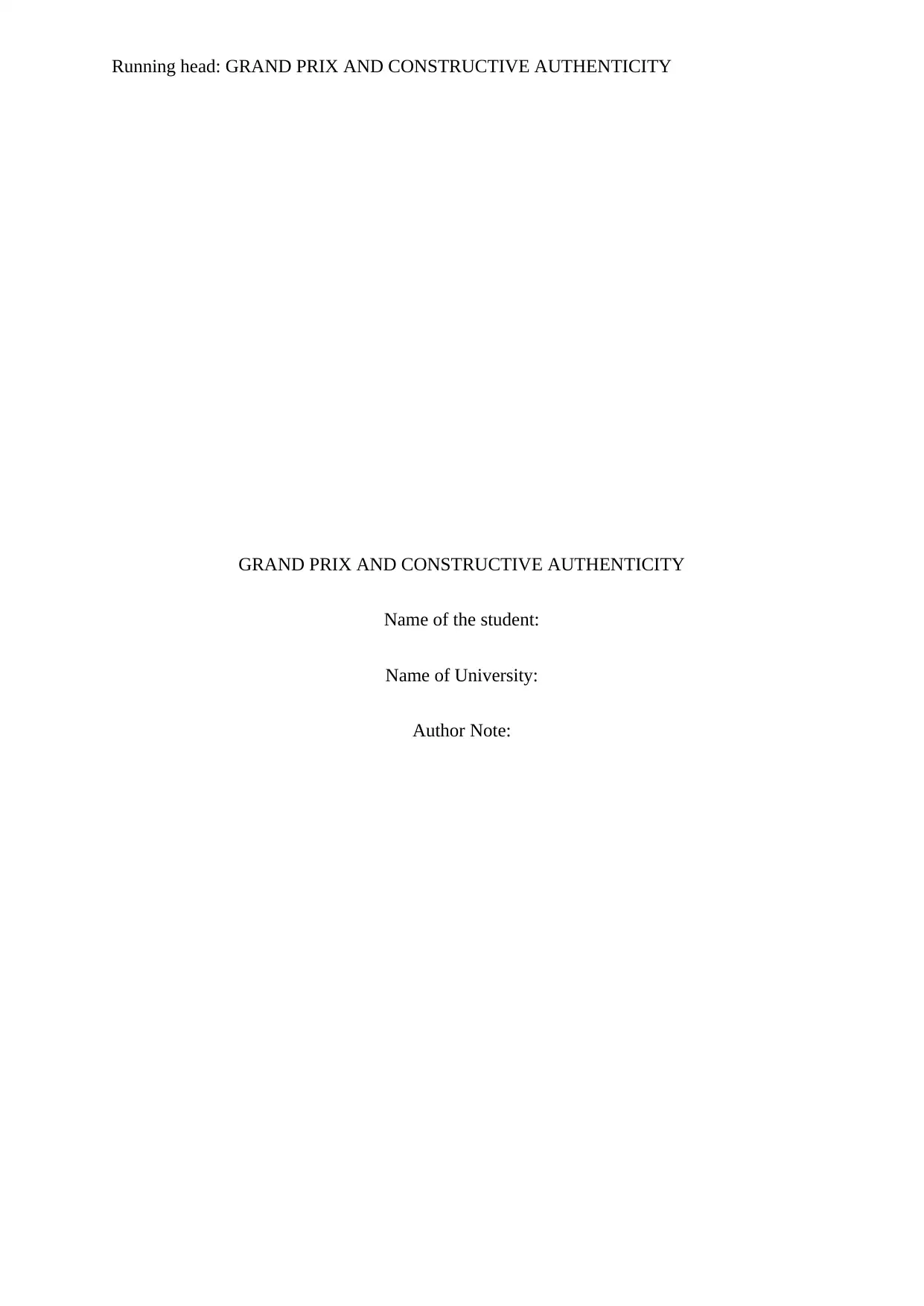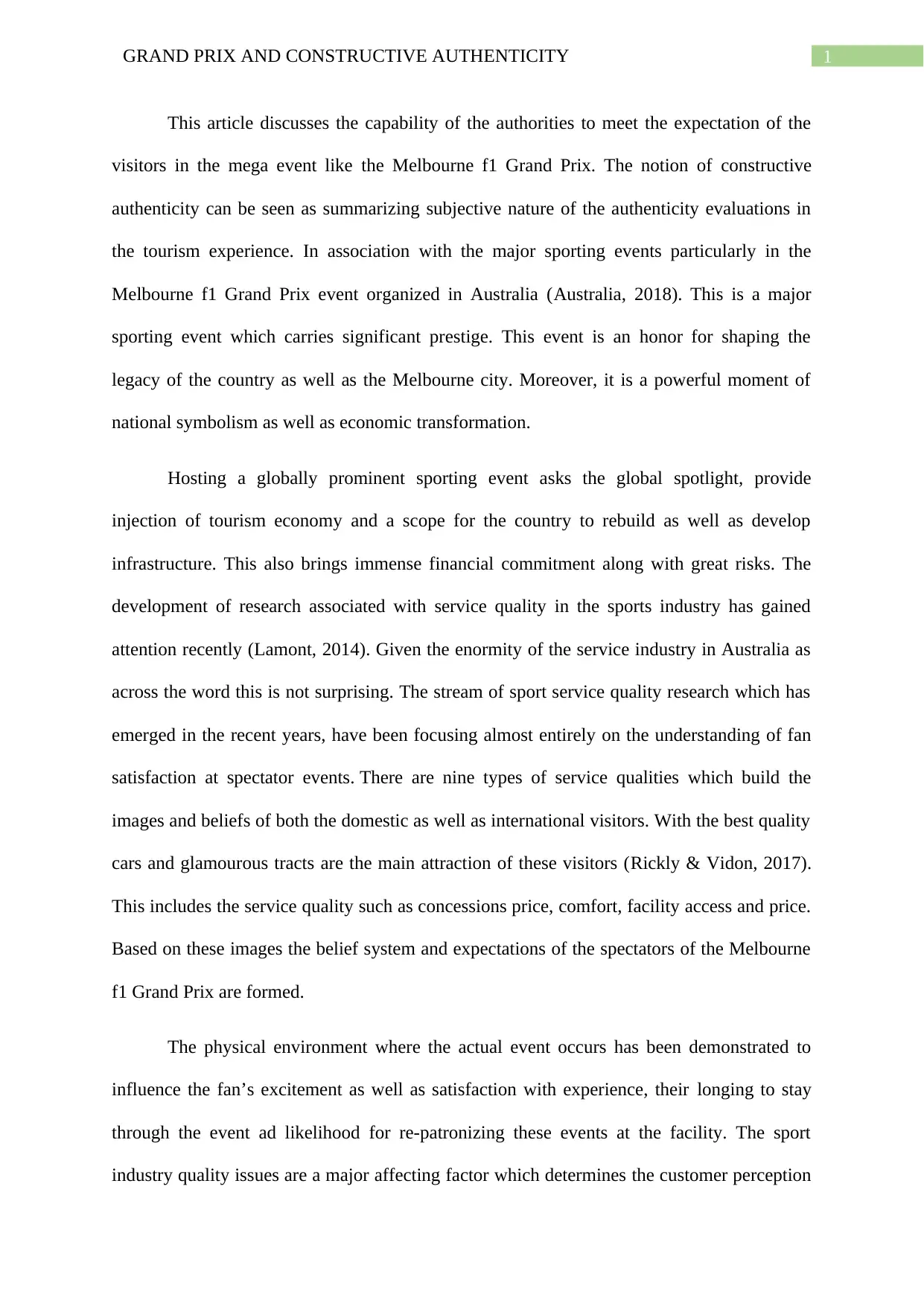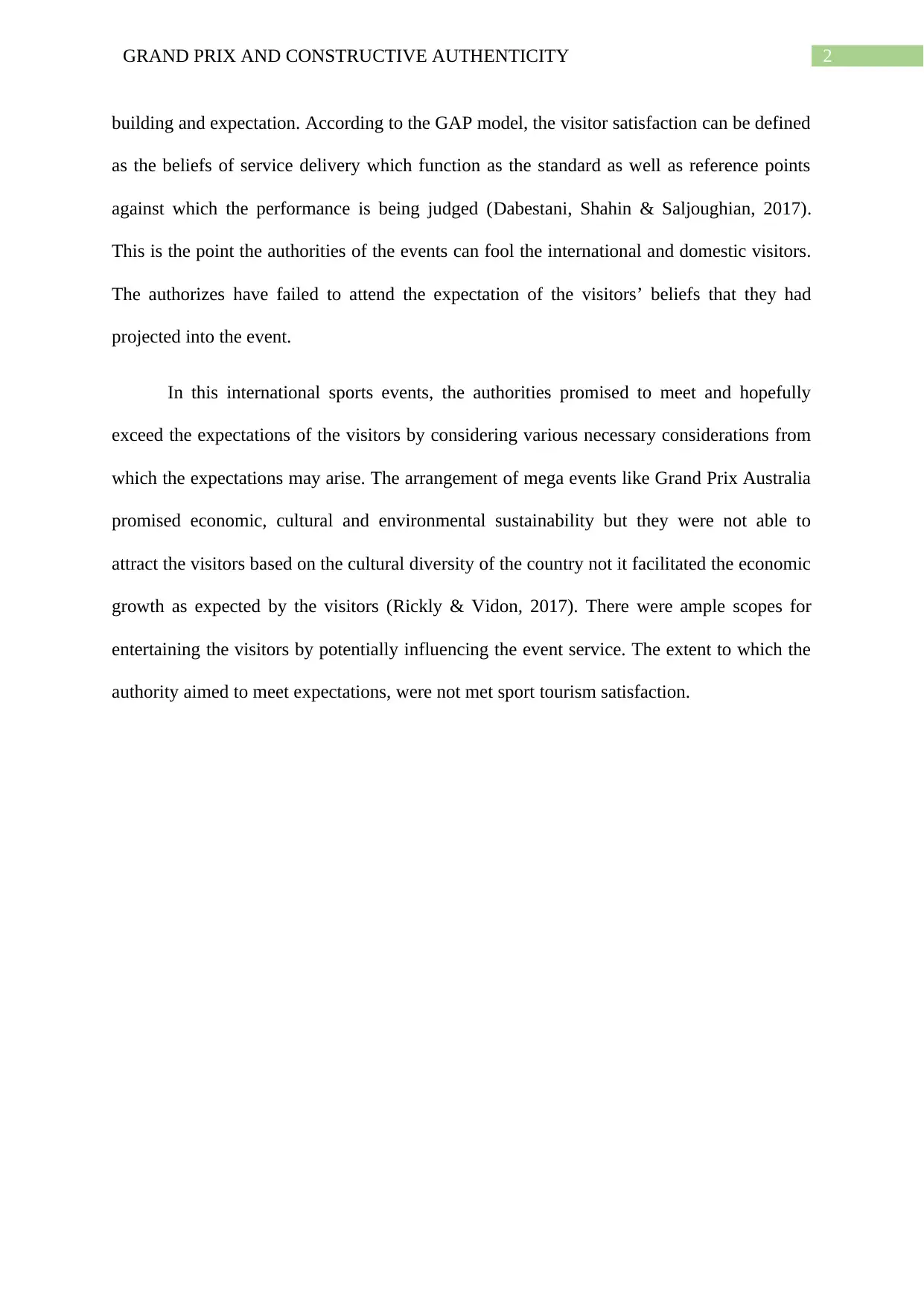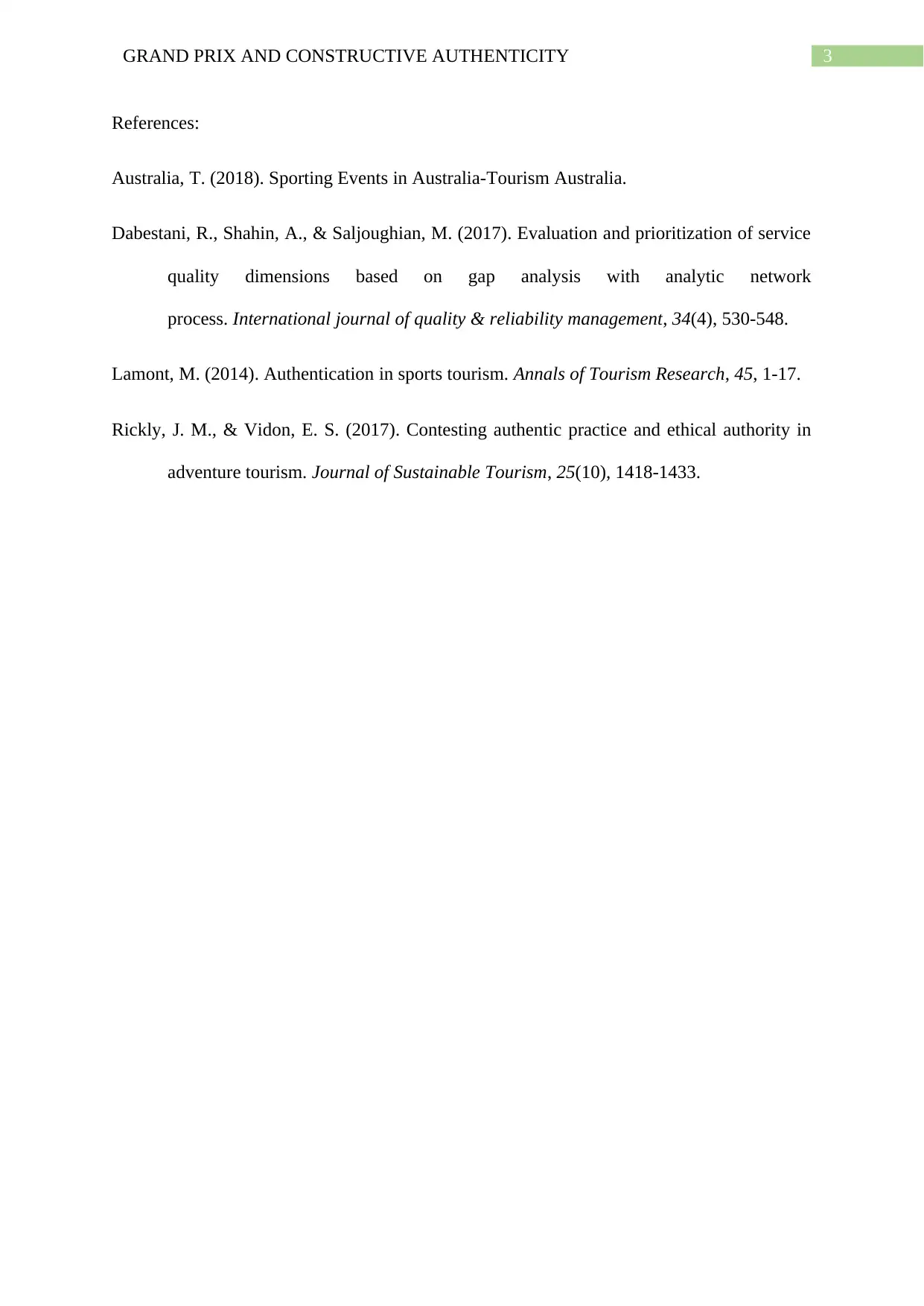Melbourne F1 Grand Prix and Constructive Authenticity Analysis Report
VerifiedAdded on 2021/06/14
|4
|728
|84
Report
AI Summary
This report analyzes the Melbourne F1 Grand Prix, focusing on the concept of constructive authenticity within the context of a major sporting event. It examines the service quality dimensions that influence visitor expectations and satisfaction, including concessions, comfort, and facility access. The report highlights the importance of meeting visitor expectations, as defined by the GAP model, and the potential for authorities to fall short in delivering on promises of economic, cultural, and environmental sustainability. The analysis draws on relevant research in sports tourism and service quality, emphasizing the significance of the physical environment and the impact of service quality issues on customer perception. The report concludes by underscoring the need for event organizers to effectively manage visitor expectations to ensure a positive and satisfying experience.
1 out of 4








![[object Object]](/_next/static/media/star-bottom.7253800d.svg)